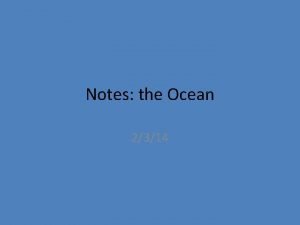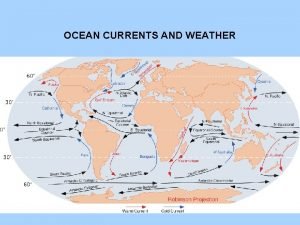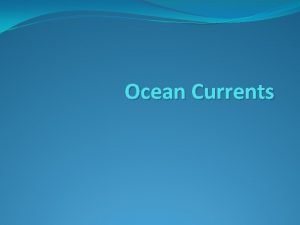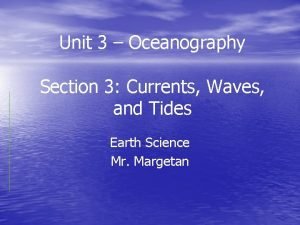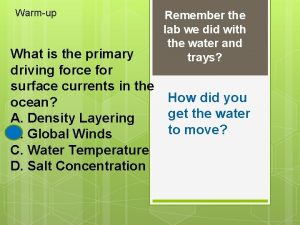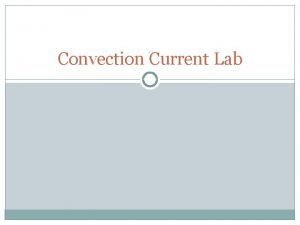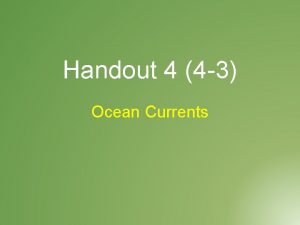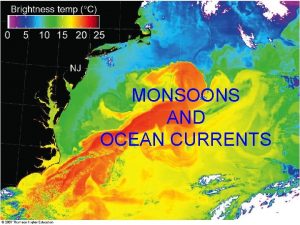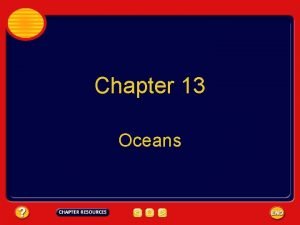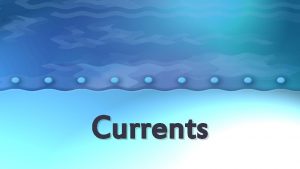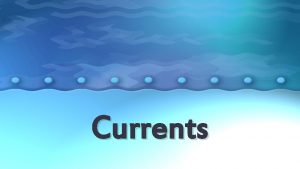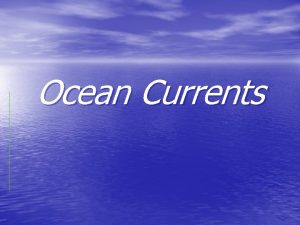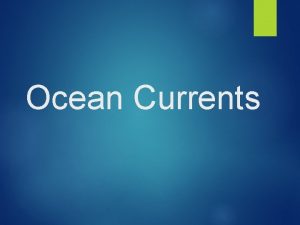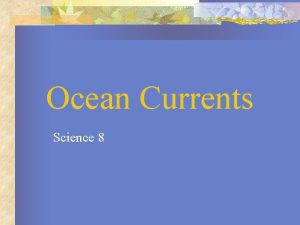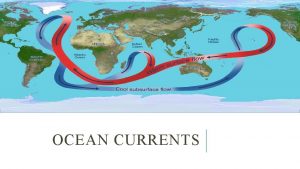Ocean Currents 1 Ocean currents a movement of










- Slides: 10

Ocean Currents 1. Ocean currents- a movement of ocean water that follows a regular pattern 2. A current is like a river, in the ocean, that’s always moving. (Octonauts) a. How do you think currents are different than rivers? 3. Thor Heyerdahl story Question: What was Heyerdahl’s theory, and how did he prove it?

Surface Currents 1. Surface Currents- a horizontal movement of ocean water that is caused by wind and that occurs at or near the ocean’s surface 2. Surface currents are controlled by three factors: global winds, the Coriolis Effect, and continental deflections. 3. These three factors keep the surface currents floating in a pattern around the Earth. **share

Global Winds- Hot question 1. Differents winds cause currents to go different directions. 2. Winds in the Equator move currents East to West; winds in the poles move currents West to East. 3. The surface currents caused by the winds have helped humans. Question: How could currents be useful to humans?

Coriolis Effect 1. Coriolis Effect- the curving of the path of a moving object from an otherwise straight path due to the Earth’s rotation 2. Coriolis Effect occurs due to the Earth’s rotation; causing the currents to turn. (Merry-go round) 3. Northern Hemisphere- currents turn clockwise 4. Southern Hemisphere- turns counter-clockwise Question: What causes currents to move in curved paths

Continental Deflections & Temperature 1. deflect- change directions 2. When surface currents hit continents, the currents change direction. (ball) 3. Currents are also affected by temperature. a. Near the equator- warm currents. b. Near the poles- cold currents

Small groups- 7 min. 1. Grab a highlighter. 2. Compare notes with your partner. 3. Highlight any notes you have in common. 4. Add notes that your partners have that you may have left off. 5. How can your partner make improvements to his/her notes? 6. What did your partner do well on his/her notes?

Grab a different color highlighter! 1. A current is like a river, in the ocean, that’s always moving. 2. Surface currents are controlled by three factors: global winds, the Coriolis Effect, and continental deflections. 3. Differents winds cause currents to go different directions. 4. Coriolis Effect occurs due to the Earth’s rotation; causing the currents to turn. 5. When surface currents hit continents, the currents change direction.

Worksheet 10 min. p. 127

Quiz 1. A _________is like a river, in the ocean, that’s always moving. 2. Surface currents are controlled by what three factors? 3. What is the Coriolis Effect? 4. Continent deflection is when _________? 5. How do winds affect surface currents?

Deep currents 1. Deep current- a streamlike movement of ocean water far below the surface caused by amount of density 2. density- the amount of matter in a given space 3. density is affected by temperature and salinity 4. decrease temperature + increase in salinity = increases density 5. Less dense water floats to the top, more dense water flows on the bottom

